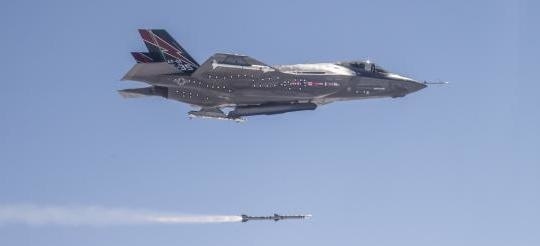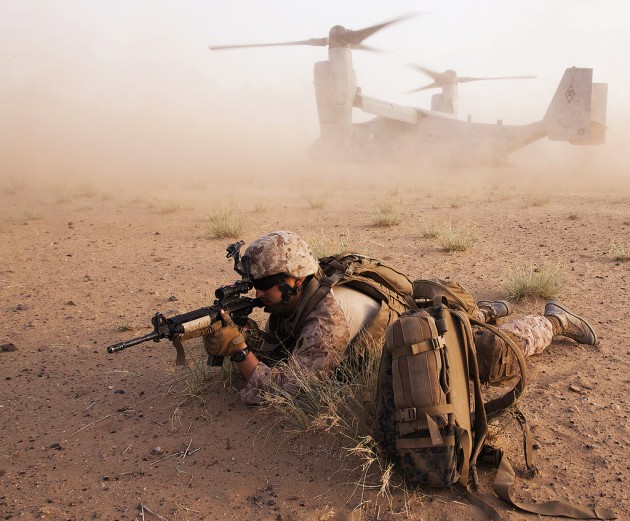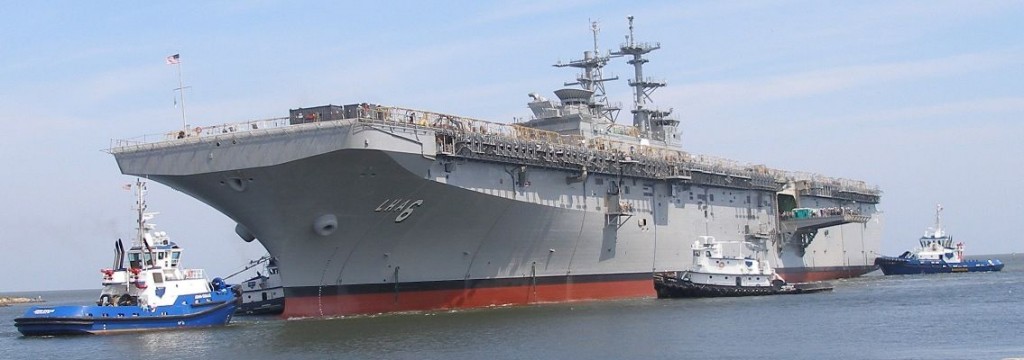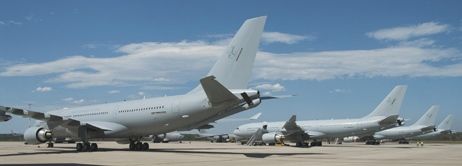Visiting Air Shows Doesn’t Convey The Reality Of Combat
Posted on
One does not build military aircraft to fly at air shows. It is fun to see the planes, to visit static displays and to talk with manufacturers and users. But the reality of what a plane can do is only seen in battle and advanced training, where operators, maintainers and leaders in real world combat situations fly the planes and use them.
Combat is unforgiving; the enemy is always thinking and reacting and the cycle of innovation is ongoing. Yet reporters who cover air shows rarely — if ever — capture this. Travelling to combat theaters can threaten your life, and visiting the folks actually shaping, building, and introducing new aircraft can be demanding. Plus you have to talk to pilots, mechanics and manufacturers who are spread out on the globe; that makes it challenging to put together an accurate picture of combat innovation.
This is certainly true for several of the aircraft that one would see at Farnbourgh and at future shows. Several abound, but I will discuss five examples of combat innovation in play and the introduction of new military aircraft: the KC-130J; the V-22 Osprey; the F-35B (the short takeoff, vertical landing variant of the Joint Strike Fighter); the KC-30A; and the A400M. All can be seen at air shows, but the hard work to turn planes into operational realities and reshaping concepts of operations is not readily visible.
The KC-130J and the Osprey have become a venerable pair enabling the Marines to fly long distances to insert ground forces. The Marines are the only tiltrotor enabled combat force, and this is changing the face of warfare. But the Osprey does not fly by itself, and its refueling is often done by its mate, the KC-130J.
The J has been operating only since 2005 and the Osprey came only a couple of years later. A recent visit to 2nd Marine Air Wing in North Carolina demonstrated the cluster of innovations surrounding these aircraft. The KC-130J has broadened the concept of support, going from a tanker-lifter to an ISR-strike capability with Harvest Hawk and with the opportunity to serve as a mothership, as the F-35B ISR and C-2 aircraft, along with Marine Corps UAVs come on line.
The Osprey has gone from what one Marine pilot called a “bar act” several years ago to a staple of an assault force. An illustration of this can be seen with regard to VMX-22. On June 27, Marine Operational Test and Evaluation Squadron 22 had its change of command at New River Marine Corps Air Station, with the new CO of VMX-22, Col. Robert L. Rauenhorst being installed.
His first major task will be working with the new Navy ship USS America to integrate aviation assets aboard that ship. He will take the squadron and fly to the USS America while it is operating off of South America and heading for its homeport, San Diego.
He won’t be seen at Farnborough, but Capt. Hall, the commanding officer of the USS America, is a fundamental part of the Osprey and F-35B enterprise. In a recent interview aboard the USS America, Hall underscored the role of the ship and its role in the aviation enterprise.
“The flight deck is about the size of a legacy LHA. But that is where the comparison ends. By removing the well deck, we have a hangar deck with significant capacity to both repair aircraft and to move them to the flight deck to enhance ops tempo,” he said.
“With the Ospreys, we will be able to get the Marines into an objective area rapidly and at significant distances. And when the F-35B comes the support to the amphibious strike force is significantly enhanced.
“And we will be able to operate at much greater range from the objective area. With the concern about littoral defenses, this ship allows us the option to operate off shore to affect events in the littoral. This is a major advantage for a 21st century USN-USMC team in meeting the challenges of 21st century littoral operations.”
The largest amphibious ship ever built is also the first ship designed with the Osprey in mind. The other new aviation piece, which will come to the USS America, will be the F-35B.
When the F-35B goes to England appears at Farnbrough and at the Royal International Air Tattoo, the focus will be on the plane and its first appearance at a major air show. (Editor’s note: at press time it wasn’t clear if the F-35Bs would fly to the UK.)
But the focus should be on the arrival of the first operational squadron of F-35s at Marine Corps Air Station Yuma, Ariz.
The squadron is being shaped for its inclusion into the Marine Corps air role via its working relationship with MAWTS. According to one MAWTS F-35 pilot, the advantage of MAWTS and VMFA 121 working together is crucial for the evolution of the way ahead.
“We have developed the infrastructure and process for the standardization of the F-35B within the USMC. We can do this by working directly with the only operational fleet squadron. We can take that forward to future squadrons as they are stood up,” the officer said “And we can introduce the rest of the USMC who participates in the exercises at MAWTS about the capabilities of the F-35 and how those capabilities can change how the MAGTF can operate. We can show battalion Marines on the ground how this aircraft is going to enhance their operational capabilities.”
The current planes are operating with Block 2A software and the Block 2B software arrives later this year in preparation for Initial Operational Capability (IOC) in 2015. What this means is that the plane operating today with the MAWTS is more limited than what come later in the year. While Block 2B is largely a software upgrade, there are some hardware modifications coming as well.
The F-35 is operating with other Marine Corps air as the blue team –good guys — against the red — bad guys — in various exercises. This means that the Marines are defining the question of how fifth generation aircraft will work with fourth generation planes to shape tactics and to train together for more effective air operations. The combat systems on the F-35 have already demonstrated an ability to enhance the impact of F-18s and Harriers on air combat operations.
As one of the instructors put it:
“We are able to employ the F-35 as a kind of information manager, using its combat systems to to employ the air ordinance carried by the other airplanes. which allows us to conserve our ordinance on the F-35 until we actually need to use it.
“This,” the instructor said, “has already led to interesting results when doing things like the defense of Yuma exercise where the F-18s were enabled to do things they can not normally do against incoming USAF aircraft as the Red Force.”
Another 21st century plane which will appear at the airshow is the new Airbus tanker, in its UK variant. My visit earlier this year to the operational squadron of KC-30As in Australia highlighted some of the innovations the Australians are coming up with. Again, those folks are not appearing at Farnborough, but they are building the new operational realities which that platform can enable.
In March, I visited No. 33 Squadron, at Royal Australian Air Force (RAAF) Base Amberley in the state of Queensland. The Squadron operates the KC-30A Multi-Role Tanker Transport (MRTT). Two of the five planes were at RAAF Base Amberley during the visit.
Last year, in combination with Australian C-17s, the KC-30A squadron supported several F/A-18 deployments to Guam as well as Darwin and Tindal in Australia’s Northern Territory. This activity demonstrated the Australian’s ability to move an air wing and support it at extended range with a tanker, while also providing airlift support. This year the squadron has supported the movement of Aussie F/A-18s from the United States across the Pacific and back to Australia.
Both operations underscore capabilities which are part of shaping a 21st century Air Force.
The RAAF has really the world’s first operational squadron of the tanker, and as the launch customer is working through the launch point for the foundational capabilities of the tanker. The Royal Air Force, United Arab Emirates Air Force, and Royal Saudi Air Force operate similar tankers, but Australia is in the lead. India, Singapore and France are currently in the process of procuring MRTTs from Airbus Defence and Space as well.
As they do, the RAAF is flying the tanker and taking it through its paces and preparing for the next phase of expanding its interoperability as the boom system comes on line later this year.
The RAAF is sorting out common procedures with the United States Air Force and regional and global partners, and this is clearly a core effort in the works for the period ahead. With Singapore adding six Airbus tankers to the Aussie fleet of five, a large fleet of allied tankers is in the works, one that can refuel the Marines’ Ospreys, KC-130Js and F-35Bs.
Another new entrant to the operational world is the A400M. The first operational A400Ms are to be found at the Orléans – Bricy Air Base in France. France and Turkey are the launch customers for the A400M and my colleague, Murielle Delaporte, recently visited the squadron and interviewed several members of the French Air Force A400M team. The airlifter is part of an effort to rework the entire approach to how the French Air Force will airlift to support operations using the rapidly reconfigurable airlifter, with its ability to shape load to mission in a rapid turn around scenario. The ability to carry troops and equipment, which can exit the aircraft from the side and from the back provides an interesting operational capability as well.
And if you look at a single A400M or Airbus tanker or F-35B you might miss a key reality of the 21st century combat aircraft—the impact of the global fleet. This is true for training, sharing of operational experience and managing supply chains. And certainly out of sight is the sustainment side of the picture, which is enabled by fleets of aircraft rather than a single copy, viewed at an airshow.
Global support for a global fleet built from the bottom up in today’s world is different from the old days where parts were warehoused locally and maintenance specialists flew around via global transport to work with local industry.
Both the F-35 and A400M have common serial numbers and UID built in. This will be a crucial tool going forward. The F-35 also has a single computer system to help manage the flow of parts. Hardly exciting when looking at air displays, but if you are in combat it is essential to have the parts from a globally deployed system to enable you to prevail.
One of the best statements of the difference between operational reality and air shows, which I have witnessed, was an exchange between Lt. General Robling, then Deputy Commandant of Aviation and now MARFORPAC, and two journalists. When asked the question: “What aircraft will the USMC fly after the Osprey and the F-35B?”
Robling’s answer went something like this:
“Every few years the F-35B will be more capable and a different aircraft. The F-35B flying in 2030 will be significantly more capable than the initial F-35Bs. The problem is that will look the same at the air shows; but the planes will be completely different inside. So you guys are going to have a tough time to describe the differences. It is no longer about adding new core platforms; it is about enabling our core multi-mission platforms. It is a very different approach.”
Robbin Laird, a member of the Breaking Defense Board of Contributors, is a defense consultant and owner of the influential Second Line of Defense website.
Subscribe to our newsletter
Promotions, new products and sales. Directly to your inbox.




